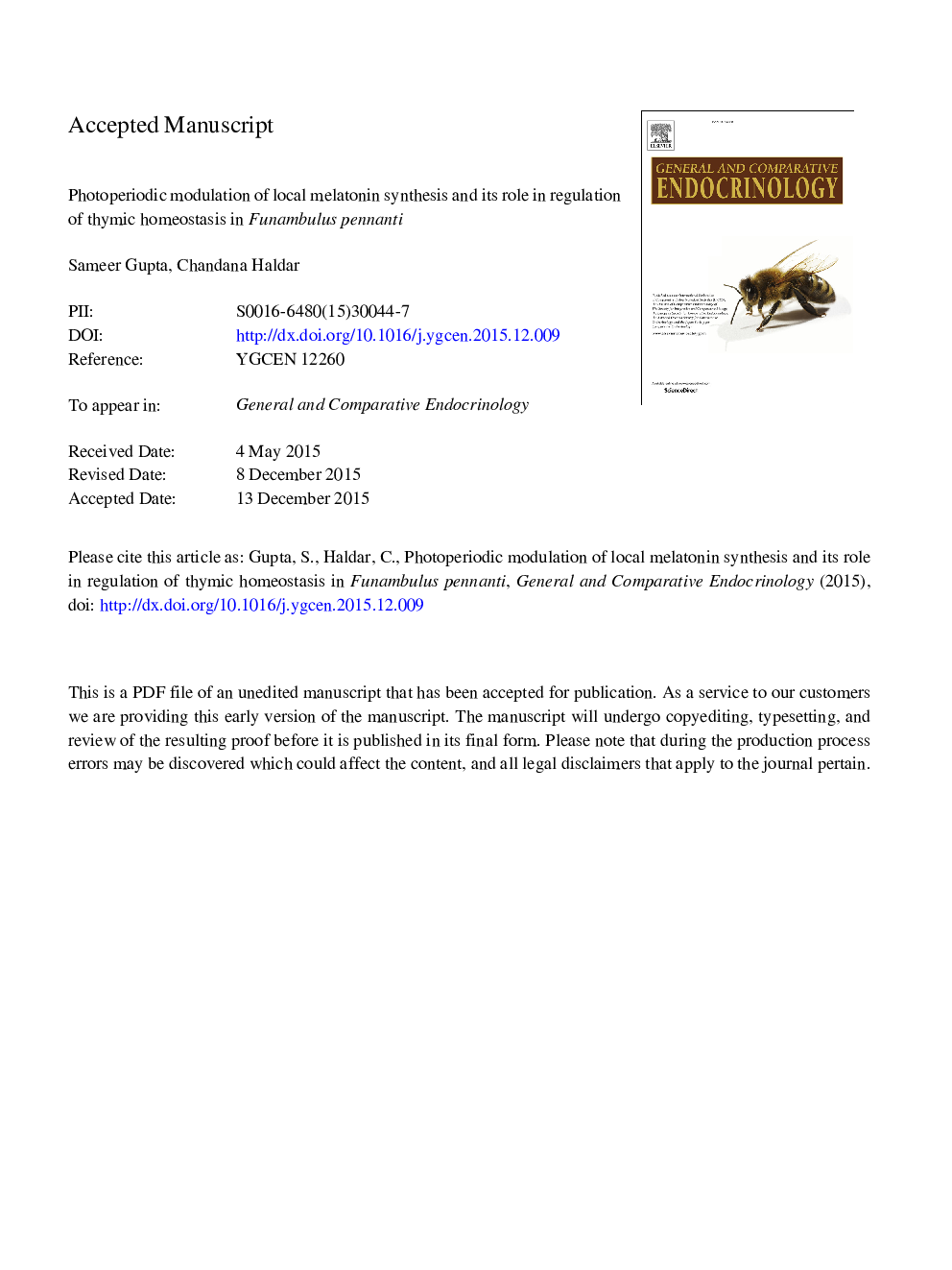| Article ID | Journal | Published Year | Pages | File Type |
|---|---|---|---|---|
| 5587834 | General and Comparative Endocrinology | 2016 | 34 Pages |
Abstract
The effect of photo-neuroendocrine system on the thymic (immune) functions is mediated by gonadal steroid and the pineal hormone melatonin. The present study explored the effect of photoperiod on the thymic melatonergic system and its role in protection of thymic T-cells from the testosterone induced seasonal oxidative stress and apoptosis. Exposure to long day-length (LD) was noted to decrease local (thymic) melatonin content and induce oxidative stress and apoptosis in the thymus. Increased peripheral level of testosterone upregulated the androgen receptor expression and, consequently reduced proliferation response of the thymocytes. Short day conditions (SD) however, reversed the effect of LD on the thymic physiology. Low level of testosterone was concomitant with diminished nitro-oxidative stress and decreased expression of redox sensitive factors (NF-κB, p53 and Bax/Bcl-2 ratio) in the thymus. SD retarded activation of caspase-3 resulting in procaspase-3 accumulation. Further, in vitro treatment of thymocytes with AR antagonist flutamide impaired the sensitivity of thymocytes to androgen and reversed the deleterious effects of testosterone on the proliferative and apoptotic responses of thymocytes. Therefore, it can be suggested that thymus derived melatonin protects thymic T-cells from testosterone induced seasonal oxidative stress, apoptosis and also acts as a potent paracrine factor for maintenance of redox status to ensure thymocyte survival.
Related Topics
Life Sciences
Biochemistry, Genetics and Molecular Biology
Endocrinology
Authors
Sameer Gupta, Chandana Haldar,
